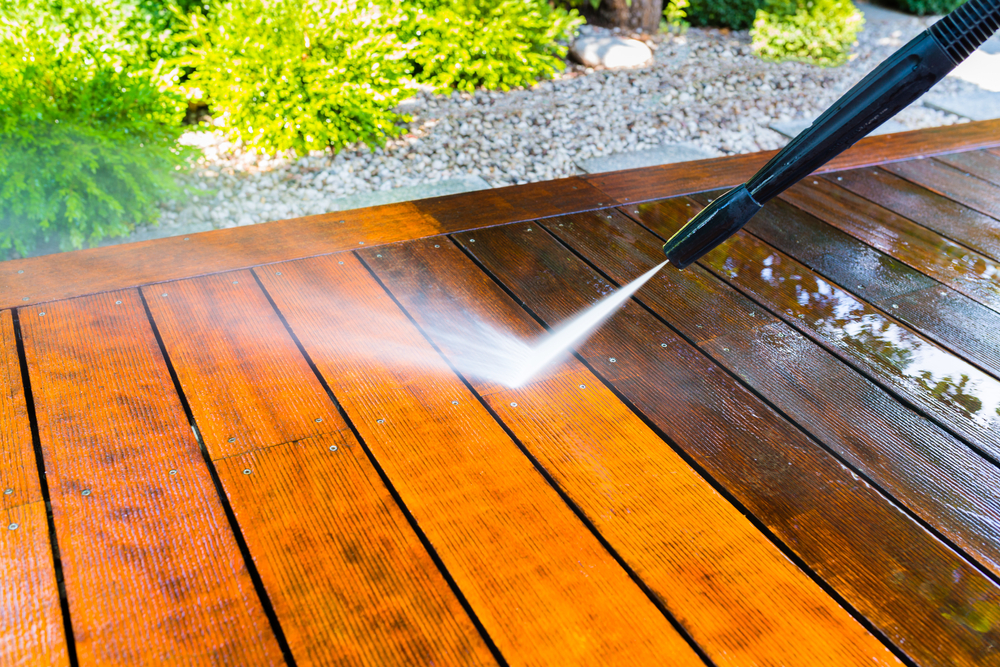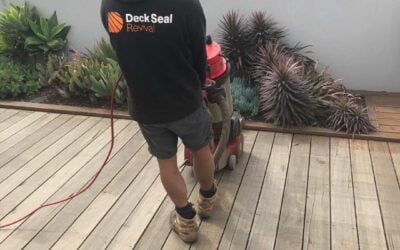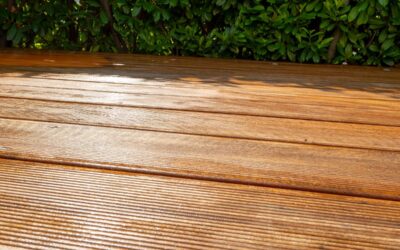Outdoor decks serve so many functions in our lives, from creating extra living space for our families to providing a beautiful space to entertain our friends. It’s no surprise that with the freedom and flexibility decks provide, many people pride themselves on maintaining their deck to ensure that it is always looking its best. In our harsh Aussie climate, it is even more important to know how to care for our timber decks, and that’s why we have put together this list explaining five of the most common deck restoration and preservation services. Plus, keep reading to find out where to find experts in deck maintenance in Australia.

Deck Cleaning
Cleaning the deck is generally the first step to restoration, in fact, giving your deck a proper clean is a great way to bring your deck back to life. A good clean relies on good preparation. This means beginning with a sweep of the decking, to ensure that you have a good base to start from. Make sure to get rid of any dirt or debris.
Now it’s high-pressure cleaner time. When using one, remember to be careful with the pressure, and make sure to cover all areas of the decking. If your deck is older, then be conservative with the water pressure, so that you don’t accidentally crack or split the wood.
Remember to always follow the safety directions for the product you are using, such as wearing closed-toed shoes. If you don’t have access to a high-pressure cleaner, then you can use your garden hose for this part.
Next up, it’s time to scrub! Mix your deck cleaner with water according to the instructions on the product, ensuring that you wear the proper safety gear necessary when dealing with the cleaning chemicals. Then you can grab a hard bristled brush and start scrubbing. Leave the cleaning solution on the deck to soak for 10-20 minutes, and then bring out the high-pressure cleaner or hose to wash away the cleaning solution, as well as any dirt. Finally, leave your sparkling clean deck to dry!
Deck Sanding
When it comes to sanding a deck, preparation is also key. Preparation for deck sanding starts with checking that every single nail and screw is countersunk in the deck by at least a couple of millimetres. If this is not the case, these screws and nails can rip your sandpaper as you sand over them.
For sanding a full deck, it is most efficient to use a belt sander as you will be able to work over large areas at a quick pace. You will also need to use a finishing sander to finish off the edges, as the belt sander won’t be able to get into all the corners and edges of the deck. As always, ensure that you follow all the safety directions of the device that you are using. Finally, give your deck a good sweep after the sanding in order to remove any sanding dust or residue.
Deck Oiling
Oiling a deck involves a process of applying a specialised water or oil-based product to your deck that is designed to enhance the natural look of your timber. This means that whether you choose an oil-based or water-based product, the effect will be will primarily be natural and subtle.
Water-based deck oil products have the distinct advantage of drying much faster than their oil-based counterparts and have a low odour. While oil-based products do take longer to dry, they also penetrate the timber, which provides protection from UV rays, water repellence, and mould resistance.
The application of decking oils begins with great preparation. First, stir the deck oil well, and then cut in by using a brush to oil the corners and edges first. Then, you can use a decking oil applicator to oil the surface area of the deck. Two coats are recommended to ensure you get the maximum benefit out of the product. Ensure you follow the directions on your product for drying and reapplication times.
Deck Staining
Deck staining is the process of applying a stain to a deck; a product which allows you to transform the colour of your timber. Also available in oil-based or water-based alternatives, stains are primarily designed to provide a long-lasting adjustment to the colour of a deck and to provide UV protection.
The application of deck stains also starts with proper deck preparation. Start by masking off areas you don’t want to be stained, and then stirring the stain in the tin. Cut in the deck with the stain by staining the edges and corners first using a brush. Then, you can use a lambswool applicator to stain the larger deck area, using long, even strokes and a moderate amount of the stain at a time.
Do You Need Deck Restoration?
Look no further than DeckSeal. When it comes to deck services like staining or oiling, sanding, restoration, and other deck maintenance services, we are proud to offer you the very best in deck expertise.
Keeping your deck in tip-top shape can be a hard task. Why not leave it to the experts, and call us at 1800 332 525, or fill out our online contact form? We will be happy to get back to you!






